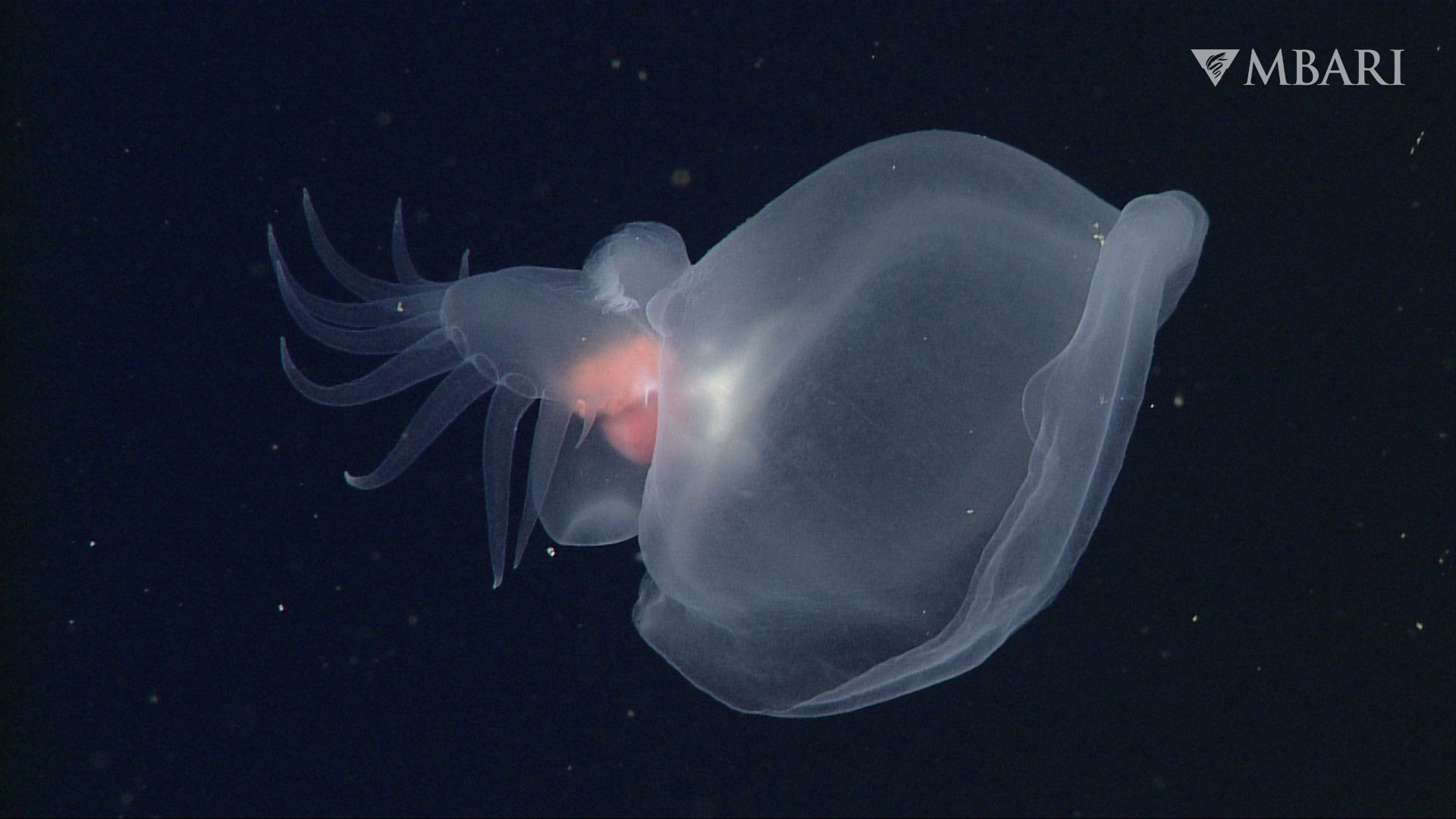A ‘Mystery Mollusc’ Has See-Through Skin and Wears a Hood to Capture Prey
Posted on Categories Discover Magazine

What a slug.
That line could be used as an insult for, say, a member of a sports team not expending enough effort. After all, the notoriously slow-moving mollusks are not exactly known for their hustle. But for a scientific team who found a remarkable creature, literally beyond the depths of where conventional slugs dwell, the line becomes quite a compliment.
When Monterey Bay Aquarium Research Institute (MBARI) researchers sent a remotely operated submersible down 8,576 feet down off the coast of Northern California, they were on a general “fishing expedition,” looking for nothing in particular. But they found something special — a slug-like creature “wearing” a hood it uses to capture prey; sporting glowing, see-through skin revealing colorful internal organs; and walking with an appendage that resembled a snail’s foot.
That strange combination of gastropod and mollusk features elicited a nickname: the ‘’Mystery Mollusc.” Over 20 years since that initial siting, the MBARI team has encountered the creature over 185 times, and analyzed with multiple techniques. Their detailed description of the curious creature is available in a report in Deep Sea Research Part I.
A Confusing New Discovery
Many aspects about the creature triggered both surprise and confusion. “Initially we had no idea what the hell it was,” says Bruce Robison, MBARI senior researcher who led the study.
There were many reasons for that confusion. First, its closest relatives by appearance — soft-bodied marine gastropods called nudibranchs — generally live in much shallower water. Second, there’s the matter of its unusual appearance.
“It’s such a funny-looking critter,” says Robison. “It looks like it was made of a bunch of spare parts from other animals.”
That level of novelty prompted the scientists to hold off on publication. “We had a whole bunch of experts in the control room on the ship and we were all scratching our heads,” says Robison. “It’s sort of flimsy. It’s transparent. It’s a soft, slow-moving, gelatinous critter. And as far as nudibranchs go, there are very few that have any of those characteristics.”
They waited over 20 years to write an article after the initial siting, because they wanted to use many tools to analyze the creature’s many unusual characteristics and provide a complete as possible description. Studying the creature’s body physiology, habitat, and genome showed that this is no ordinary slug.
Bathydevius Caudactylus in Deep Waters
Since the creature was such a biological outlier, the scientists developed some extraordinary means to study it. For example, measuring respiration tends to be a good proxy for metabolism. That is generally done in the lab. But the researchers suspected that bringing these deep-sea dwellers to the surface and subject it to different temperatures, pressure, and light would stress the creature and make any measurements unreliable. So, they tasked an engineer to find a way to monitor the creature’s breathing while it stayed at the bottom.
That depth was a mystifying aspect of the find. Almost all known slugs live in much shallower water. Discovering this creature at that depth was “like finding hummingbirds on Mount Everest,” says Robison. “There’s no way we expected to find this kind of a critter there.”
Because of the many unusual aspects of this creature, they named it Bathydevius caudactylus and it necessitated a genome analysis. The scientists compared three key genes to those of its closest relatives.
“There’s no question that it is separated from all of the other nudibranchs,” says Robison. “There’s nothing else like it genetically.”
Ocean Depths Contain Mysteries Worth Preserving
This find emphasizes that the depths still hold many mysteries. Several other research groups send submersibles — both with and without people — to the bottom of the ocean in this area.
“This region is the best-studied patch of deep ocean in the world and yet we’re still finding new stuff,” Robison says. “There are things going on out there that we cannot even imagine yet because we have no precedent.”
That lack of knowledge should come with an ecological admonition for industry. Disturbing the deep ocean floor could have rippling unintended consequences on many species.
“There are many resources down there that are really appealing,” Robison says. “I don’t have any question that we will indeed go after them, but it matters how we do it. If we just plunge ahead and don’t understand what we’re disrupting or don’t understand what impact we’re having on the ecosystem systems that we’re working in, it’s gonna come back and bite us on the ass one way or another.”